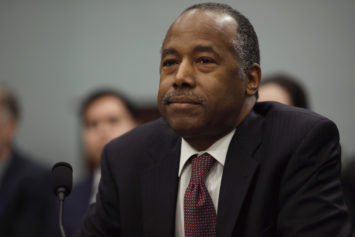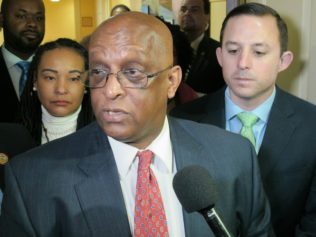Should a blighted neighborhood be torn down in order to save it? Apparently, the governor of Maryland thinks so. In Baltimore, where people need housing, there is a plan afoot to raze vacant buildings. Is gentrification next?
Maryland Gov. Larry Hogan, along with Baltimore Mayor Stephanie Rawlings-Blake, announced a project to demolish thousands of vacant buildings in Baltimore and replace these with green spaces and new development. Called Project C.O.R.E., which stands for Creating Opportunities for Renewal and Enterprise, the four-year project would provide $94 million to tear down vacant buildings, as Reuters reported, and include $75 million to create spaces for parks, businesses and housing. The state is also backing the project with over $600 million in financing for private developers.
Project C.O.R.E. will kick off in the Sandtown-Winchester neighborhood of West Baltimore, home of police violence victim Freddie Gray. His death in April from a broken spinal cord while being transported in a police van sparked protest and unrest, and resulted in indictments for the six police officers who held him in custody. But Gray’s death and the aftermath also shed light on the economic injustice facing poor Black Baltimore.
“As I walked the streets of this city, people were repeatedly calling out and begging us to help do something about the blight that is all around them,” Hogan said, as reported in the Baltimore Sun. “We have heard your calls for action… I’m a guy on a mission who wants to get things done.”
“Fixing what’s broken in Baltimore requires that we address the sea of abandoned, dilapidated buildings that are infecting entire neighborhoods,” said Hogan, according to the Washington Post. “They aren’t just unsightly, they are also unsafe, unhealthy and a hotbed for crime.”
In some circles, the news was positively received. Rev. Jamal H. Bryant, pastor at the Empowerment Temple in Northwest Baltimore, told the Baltimore Sun that the news was “absolutely amazing,” hoping that local people would be hired for construction and other jobs. “Housing is one piece of the puzzle, but it all goes back to economics,” Bryant said. “I hope this is the beginning of an economic agenda for our community.”
However, there is also a healthy dose of skepticism over the new effort. Local residents need job opportunities. And in a city where thousands of rotting homes will be destroyed, there is a chronic need for affordable housing.
“The challenge is to do something about the underlying issues, disinvestment and employment,” John Kromer, an instructor at the University of Pennsylvania and a housing consultant, told the Washington Post.
Further, as WBALTV.com has reported, demolition efforts in other cities such as Detroit, Cleveland and Youngstown, Ohio, have led to mixed results, suggesting that destroying homes without a larger vision for a city may not be the most effective plan. Moreover, gentrification has gripped many urban centers, as Black people are kept out of the development and employment opportunities, and with contracts going to the well-connected and the lighter-complected. Supplanted in their own neighborhoods as more affluent whites move in, Black and poor residents can no longer afford to live in the communities that raised them. We have read this story before.
Baltimore, whose population is over 622,000, has a substantial urban blight problem. A former industrial center, the city’s population has shrunk by a third in the past six decades, with around 16,000 vacant buildings and 14,000 vacant lots.
Meanwhile Hogan, a former commercial real estate broker, cancelled a light-rail project for Baltimore, arguing the plan was too expensive and would not succeed. Instead, he announced a $135 million bus service plan that was criticized for being inadequate. The governor, a conservative Republican, has faced criticism for ignoring the needs of majority-Black Baltimore. This comes as white, conservative, Tea Party Republican governors have recently come under fire for policies that have damaged Black lives. The track record is concerning.
In Michigan, Gov. Rick Snyder has created a neo-colonial system in which state emergency managers have taken over majority-Black cities such as Flint. Emergency managers replaced Flint’s water supply, causing it to be poisoned with lead — an irreversible neurotoxin — and resulting in a state of emergency. According to MSNBC, 9,000 children under age 6 in Flint have been exposed, and 200 children have elevated blood levels. Calls for Snyder’s arrest have grown.
And in Maine, Gov. Paul LePage has been slammed for making racist comments at a town hall meeting. “… guys with the name D-Money, Smoothie, Shifty — these types of guys — they come from Connecticut and New York, they come up here, they sell their heroin, they go back home,” LePage said. He added: “Incidentally, half the time they impregnate a young white girl before they leave, which is a real sad thing because then we have another issue we have to deal with down the road.”
Some in Maine are seeking his impeachment.



